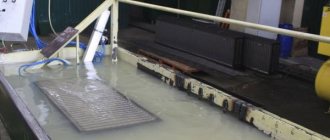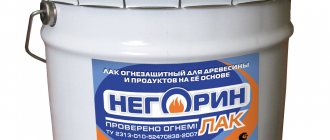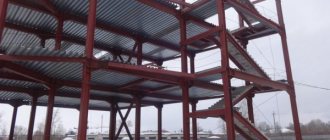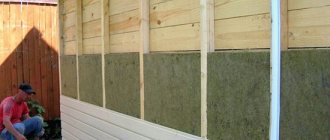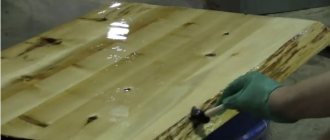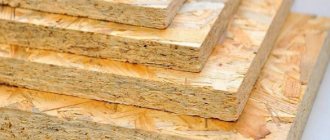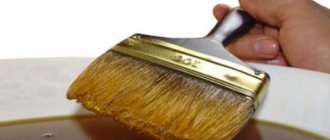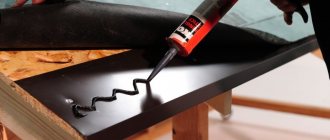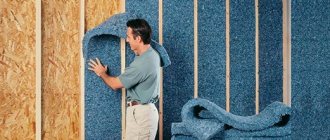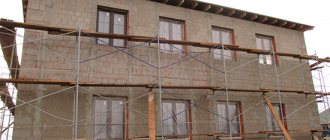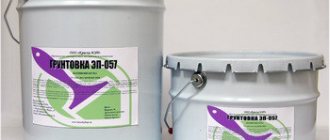Such building structures - a brick cellar, a basement, the roof of a building - need protection from the destructive effects of moisture. There are many different ways. Among waterproof and moisture-resistant coatings, waterproofing plaster stands out, the scope of which is extensive.
What types of plaster compositions there are, how to apply a protective coating correctly, what mixtures and manufacturers are popular are described in the article.
The need for waterproofing
To protect building materials from moisture, waterproofing is necessary. Only a dense, waterproof coating can block the path of water. Waterproofing, which closes the path of liquid, will protect not only wooden but also brick walls. A brick saturated with water reacts with it, as a result of which salts are washed out of the building material and appear on the surface. The strength of bricks decreases.
A warm, humid environment is favored by all kinds of microorganisms and mold, which contribute to the destruction of building materials. Moisture entering through small pores and microcracks into reinforced concrete causes corrosion of the reinforcement. It is clear that access to moisture inside building structures must be reliably blocked.
Waterproofing plaster is needed for swimming pools, foundations, underground structures, cellars, brick basements and other structures where there is constant contact with moisture.
Waterproofing walls: step-by-step instructions
Waterproofing walls with your own hands is not such a difficult task if you learn all the secrets of its implementation.
Many building materials tend to absorb and retain moisture in their pores. Due to capillary suction, water rises quite high through such pores. Saturation with moisture causes loss of strength of materials and their destruction. This is why waterproofing is needed. Waterproofing the walls from the outside guarantees an extension of their service life.
Types of waterproofing
A waterproofing layer created in different ways becomes a barrier to moisture. Depending on the method and materials used, waterproofing can be:
- painting (applying layers of bitumen, resins, rubber);
- impregnation (application of compounds that penetrate deep into the pores of structural materials);
- coating (coating with hot bitumen compounds);
- mastic (applying an adhesive mass with fillers - mastic);
- injection (pumping special impregnating compounds into holes and cracks);
- pasting (sticker of rolled bitumen or resinous materials);
- plastering (plaster compositions allow you to additionally insulate the structure);
- backfill, for example, backfill with bentonite clay;
- film (use of anti-condensation films);
- cast (hot or cold pouring of mixtures in several layers);
- mounted (installation of hydromembranes).
Types of waterproofing
Also, depending on the location, a distinction is made between internal and external waterproofing.
We reveal the secret of why it is impossible to waterproof walls
Ordinary water creates big problems for residents of houses or apartments.
Water comes from the ground, after rain into the basements, or flows from the ceiling along the walls from untidy neighbors who do not take care of their own water supply and sewer systems. It happens that at first glance there is no water, but mold and mildew spread, which confirms the presence of excess moisture in the walls. These cases are very common, and an error in the construction of buildings is to blame. Previously, they saved money on waterproofing necessary areas of the house. This often happens now. Such savings lead to the above problems with which people have been suffering for years.
Types and compositions of waterproofing plasters
Depending on their action, waterproofing plasters are:
- waterproof;
- hydrophobic
Water resistance is obtained by forming a coating of increased density. For plaster mortar, use fatty CPS from 1:1 to 1:3 with mineral additives. For these purposes, emulsion (milk) of ceresite (liquid glass) or sodium aluminate has long been used.
To make a waterproof mortar, cement and sand are mixed in water, then this mixture is added, stirring, to liquid glass. This composition sets quickly, so you need to work quickly (it’s better for a beginner to try his hand first). To maintain the homogeneity of the mixture, stir the mass from time to time. To check the dosage, do a test plastering.
Composition of waterproof solution
Solution composition:
- 1.5 parts each – liquid glass and cement;
- sand – 4 parts;
- water – ¼ weight of liquid glass.
Hydrophobization is the process of imparting the property to a coating not to become covered with moisture and to repel it without absorbing it. For this purpose, hydrophobic plaster mixtures based on Portland cement with the addition of water repellents are used.
For example, using CemAqua additives from Cemmix, a coating is obtained that has hydrophobic properties throughout its entire volume (3D hydrophobization).
CemAqua is added to half the water intended for mixing. Then the plaster solution is mixed, adding water during the mixing process in the amount necessary to obtain a dough of the required viscosity.
Cement-sand
Cement-sand mortar is the most common type of material in private construction. Binder – Portland cement M400 and higher. The composition also includes quartz fine sand and mineral fillers, for example, stone flour, bitumen additives, crushed coal. The solution is made waterproof by: sodium aluminate, ferric chloride, liquid glass - ceresite. You can prepare the composition yourself, as was done before modern plastering materials appeared on the market.
Manufacturers
So, what kind of plaster is used for waterproofing? Building materials stores offer developers a wide range of waterproofing mixtures. The compositions are sold in multilayer craft bags or plastic bags and buckets. Some materials come with emulsions in a separate canister.
Among the well-known materials, the following products from well-known manufacturers should be noted:
- Magma. Cement-based composition with additives in the form of mineral components. Used for processing underground tunnels, passages, elevator shafts, basements, foundation structures, swimming pools. Application is permitted on surfaces made of brick stone, reinforced concrete, and bases made of sand-cement mixture. This plaster composition does not adhere to wood, gypsum, asbestos cement, and does not adhere well to painted coatings that have salt deposits or cracks. It is prohibited to use the composition on a surface if it has not completely shrinked, is under heavy loads, and has been covered with a concrete mixture less than three months ago;
- Consolit-540. This plaster is used to decorate saunas, basements, laundry rooms, swimming pools, and foundations. The mixture has good strength, resists corrosion, and strengthens the structure. The main components contain a special modifier that prevents the formation of microcracks. This solution is considered an effective option for restoration work;
- Hydrolast. A composition based on cement and polymer additives, forming a thin layer. It is used on surfaces where the water column does not rise above the three-meter mark. Vapor-permeable, elastic, low-temperature resistant material with high adhesion rates;
- Barralastic. Two-component dry material used on wood, metal, concrete and brick surfaces. The layer allows air flow to pass through perfectly and resists alkaline and acidic environments. The material is environmentally friendly for the human body and is used in the treatment of drinking water systems;
- Bauta. Elastic mixture used for interior and façade surfaces. The effect reaches a water pressure of up to a five-meter column;
- Osmoflex. Plastic mass for flexible connection of walls with pipes, floors and ceilings, for structures subject to dynamic loads and vibrations. Adheses well to the surface, resists low temperatures and negative influences.
Characteristics and properties of waterproofing plaster
Among the advantages that plaster waterproofing has:
- resistance to various types of mechanical stress;
- high reliability of the coating, which manifests itself even during prolonged flooding;
- good adhesion;
- high frost resistance (≥ 200 cycles);
- environmental friendliness;
- durability;
- suitability for finishing;
- low cost.
The technical characteristics of different mixtures vary. The main characteristics are: strength, adhesion, water-holding capacity and water resistance.
Surface preparation
Before applying a waterproofing coating, the base must be cleaned of oil stains, areas of biological damage, dirt, paint, crumbling parts of the old coating, and dust. Biocidal compounds are used to neutralize the fungus. Sinks whose dimensions exceed 3 cm are leveled with non-shrinking cement mortar.
Cracks and crevices are embroidered and caulked with the same solution. Excessively uneven surfaces are leveled in advance. The corners where the wall and floor meet are rounded with fillets made of cement plaster composition. Radius – 3-4 cm. Smooth concrete surfaces are covered with notches.
Plaster application technology
Work is carried out at temperatures from +5 to +25°C. Some formulations can be applied over a wider temperature range. Air humidity should be no higher than 65%. The applied composition is protected from rain, drying out, freezing, drying out by wind and sun, and mechanical stress.
Places where deformation is possible (corners, niches, etc.) are reinforced by installing a metal mesh.
Before applying the waterproofing layer, the surface of the base is leveled with a regular solution, and 4 weeks are given to level the coating to working strength. Weak surfaces are strengthened, since waterproofing solutions have an increased density. If the wall does not need to be leveled, it is prepared as indicated above.
Methods for applying plaster waterproofing
Plaster, including those with waterproofing properties, is applied either manually using spatulas and special brushes or mechanically using special spray equipment.
Spraying or shotcrete
A number of types of plaster waterproofing are applied by spraying, with this method the surface is covered almost evenly with small particles of material, ultimately creating a sealed layer without seams.
Before starting work, you should thoroughly clean the surface from dust and dirt and prepare the material and equipment. Spraying is carried out using pumps and hoses; special care must be taken to ensure that the latter do not become clogged. During work, you must strictly follow the instructions attached to the material, because the nuances of applying waterproofing from different companies may vary slightly. After applying waterproofing, you need to thoroughly rinse and clean the equipment so that the hose does not become clogged and it works properly next time.
The main advantage of this method is the speed of application, since mechanical application can quickly cover large areas, unlike manual application, where the work is slow.
Manually
Applying a plaster mixture that acts as waterproofing manually saves money because less material is consumed and there is no need to purchase expensive equipment. However, this method requires more time and skills.
The surface, cleared of dirt, is slightly moistened with water, just so that the surface is slightly damp, but in no case too wet, this is necessary for better adhesion to the waterproofing material. Next, the dry mixture is mixed with water in the ratio indicated on the package. The future mixture is kneaded with a mixer for 3 minutes, after which the solution is allowed to rest for 5 minutes, then beaten with a mixer again. The composition for the first layer should be a little more liquid, then before applying the second layer, it should be thickened a little. The coating is applied with a brush or spatula in an even layer, moving in one direction. The applied material must dry completely, then a second layer is applied, to which a little less water is added. The second layer is better applied with a spatula, because its consistency is already denser, the movement is made in a perpendicular direction from the direction of application of the first layer.
The top layer must be allowed to dry completely, and at the same time protected from further drying out. On very warm days, it is recommended to regularly wet the plastered surface. Exactly a week later the plaster coating is grouted.
Important: Each composition has its own specific properties and chemical elements added to it. That is why each material has its own detailed application instructions and it is precisely these that must be followed when performing work.
Use of auxiliary materials for high-quality application
Sometimes when applying various plaster mixtures, reinforcement or reinforced mesh is used. Reinforcement is needed to give the material a more stable state so that the coating does not flow off the surface after application. Glass and synthetic fabrics are most often added as reinforcement; plastic and metal mesh are often also used.
Scheme for applying waterproofing plaster to the mesh
Additional circuit
Scheme for applying waterproofing plaster to the mesh
